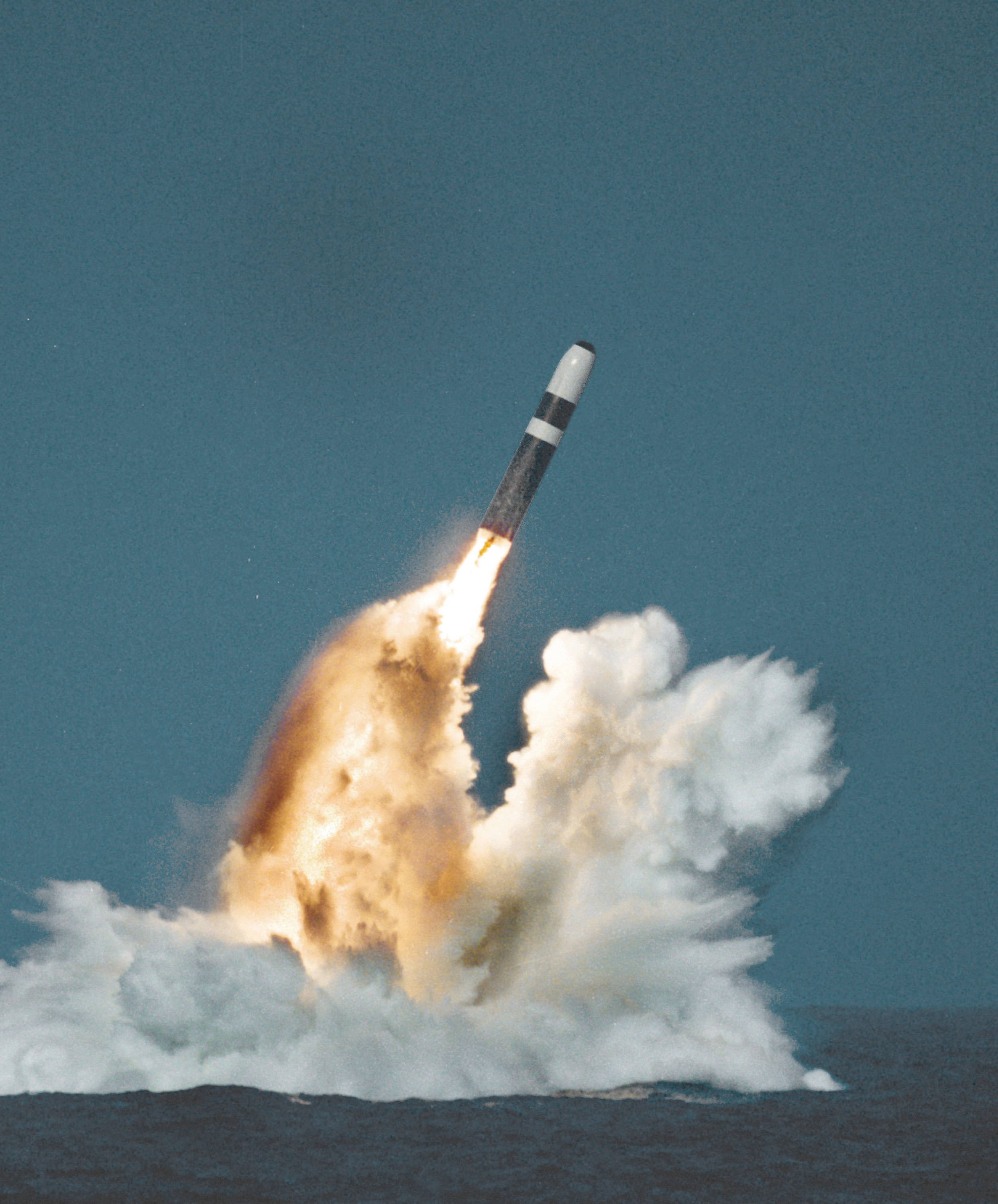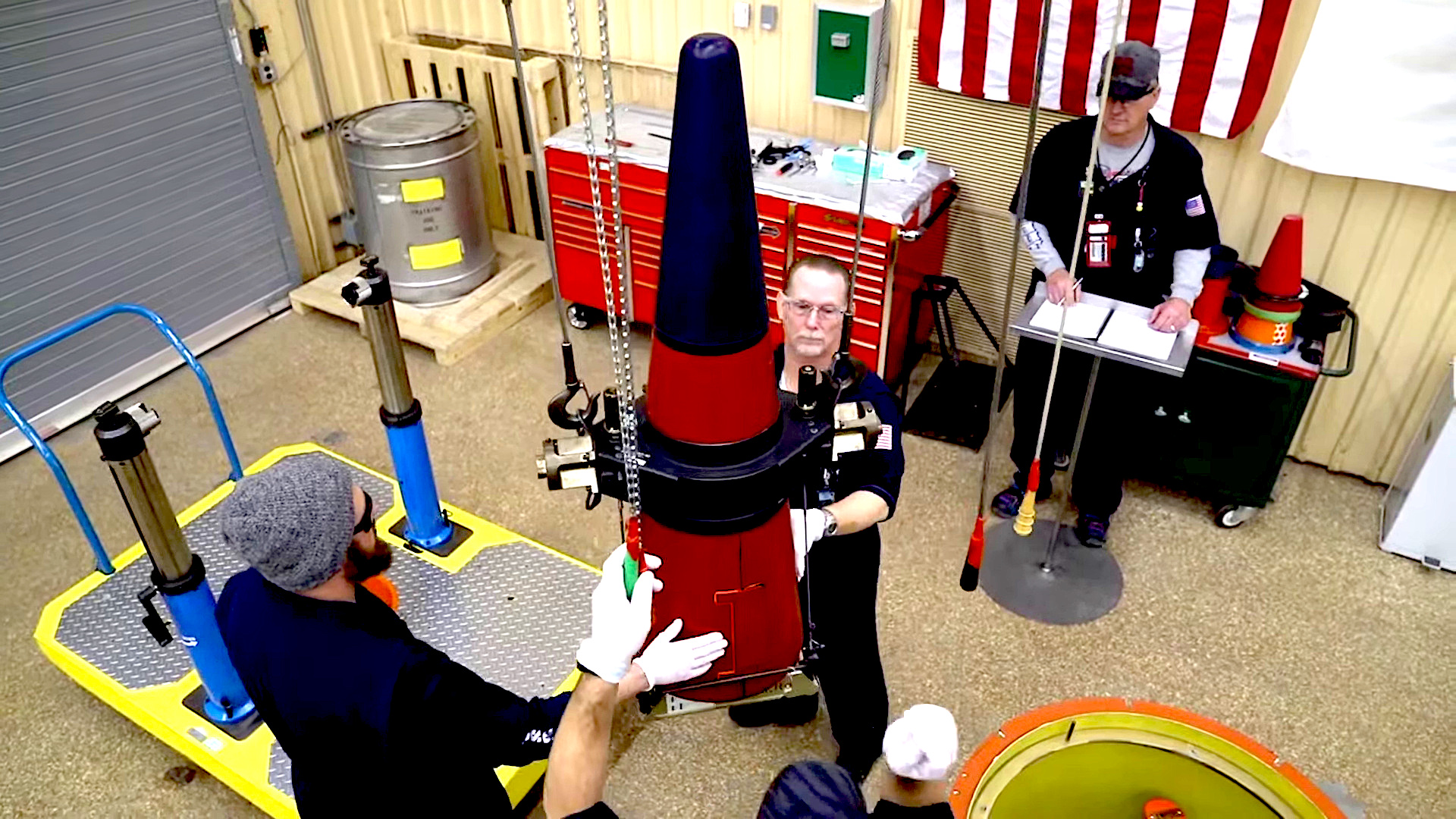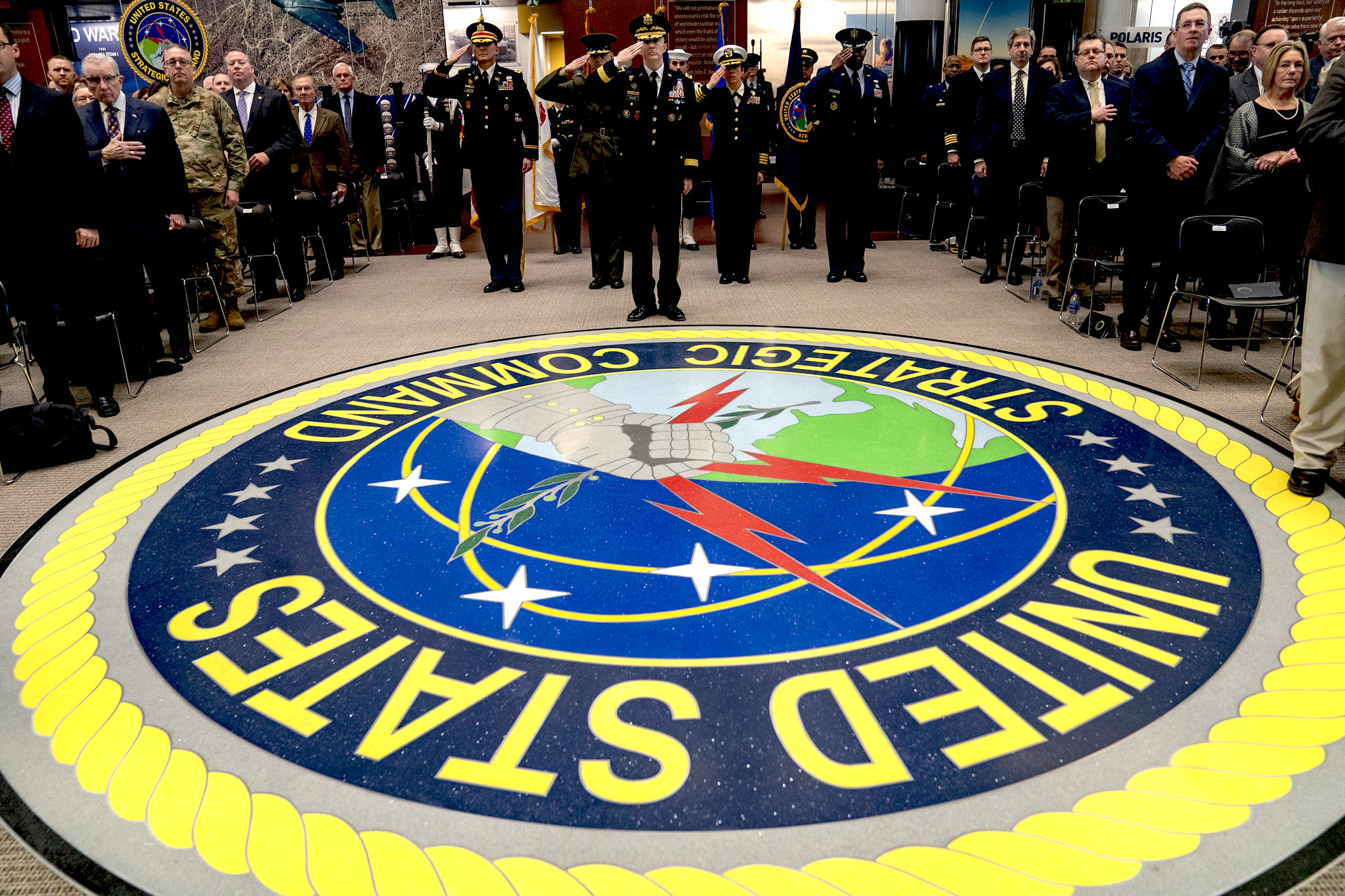By Scott Ritter, Consortium News, 9/27/24
If you’re not thinking about the end of the world by now, you’re either braindead or stuck in some remote corner of the world, totally removed from access to news.
Earlier this month we came closer to a nuclear conflict between the U.S. and Russia than at any time since the Cuban Missile Crisis of 1962.
[See: SCOTT RITTER: 72 Minutes]
Today we are even closer.
Most scenarios being bandied about in the Western mainstream media that involve a nuclear conflict between Russia and the United States have Russia initiating the exchange by using nuclear weapons against Ukraine in response to deteriorating military, economic, and/or political conditions brought on by the U.S. and NATO successfully leveraging Ukraine as a proxy to achieve the strategic defeat of Russia.
Understand, this is what both Ukraine and the Biden administration mean when they speak of Ukraine “winning the war.”
This is a continuation of the policy objective set forth by Secretary of Defense Lloyd Austin in April 2022, “to see Russia weakened to the degree that it can’t do the kinds of things that it has done in invading Ukraine,” meaning that Russia should “not have the capability to very quickly reproduce” the forces and equipment that it loses in Ukraine.
This policy has failed; Russia has absorbed four new territories — Kherson, Zaporizhia, Donetsk and Lugansk — into the Russian Federation, and the Russian defense industry has not only replaced losses sustained in the Ukrainian conflict, but is currently arming and equipping an additional 600,000 troops who have been added to the Russian military since February 2022.
It is the United States and its NATO allies that find themselves on their back feet, with Europe facing economic hardship as a result of the extreme blowback that has transpired because of its sanctioning of Russian energy, and the United States watching helplessly as Russia, together with China, turns the once passive BRICS economic forum into a geopolitical juggernaut capable of challenging and surpassing the U.S.-led G7 as the world’s most influential non-governmental organization,
Illusionary Red Lines
As a result of this abysmal failure, policymakers in both the U.S. and Europe are undertaking increasingly brazen acts of escalation designed to bring Russia to the breaking point, all premised on the assumption that all “red lines” established by Russia regarding escalation are illusionary — Russia, they believe, is bluffing.
And if Russia is not bluffing?
Then, the Western-generated scenario paints an apocalyptic picture which has a weak, defeated Russia using nuclear weapons against Ukraine in a last, desperate act of vengeance.
According to this scenario, which the U.S. and NATO not only war-gamed out but made ready to implement when these entities imagined that Russia was preparing to employ nuclear weapons back in late 2022-early 2023, the U.S. and NATO would launch a devastating response against Russian targets deep inside Russia designed to punitively degrade Russian command and control, logistics, and warfighting capacity.
This would be done using conventional weapons.
If Russia opted to retaliate against NATO targets, then the U.S. would have to make a decision — continue to climb the escalation ladder, matching Russia punch for punch until one side became exhausted, or preemptively using nuclear weapons as a means of escalating to de-escalate — launch a limited nuclear strike using low-yield nuclear weapons in hopes that Russia would back down out of fear of what would come next — a general nuclear war.
The Pentagon has integrated such a scenario into the range of nuclear pre-emption options available to the president of the United States. Indeed, in early 2020 U.S. Strategic Command conducted an exercise where the secretary of defense gave the launch instructions for a U.S. Ohio class submarine to launch a Trident missile carrying W-76-2 low yield nuclear warheads against a Russian target in a scenario involving Russian aggression against the Baltics in which Russia used a tactical nuclear weapon to strike a NATO target.
The insanity of this scenario is that it ignores published Russian nuclear doctrine, which holds that Russia will respond with the full power of its strategic nuclear arsenal in the case of a nuclear attack against Russian soil.
Once again, U.S. nuclear war planners believe that Russia is bluffing.
Another Twist

Submarine launch of a Lockheed Trident missile. (DoD, Wikimedia Commons, Public domain)
There is another twist to this discussion.
While the U.S. might assess that Russia would not seek a general nuclear war following the use by the U.S. of low yield nuclear warheads, the problem is that the means of employment of the W-76-2 warhead is the Trident submarine launched ballistic missile.
While the February 2020 scenario had Russia using nuclear weapons first (something which, at the time, represented a gross deviation from published Russian nuclear doctrine and the declaratory policy statements of the Russian president), the fact is the U.S. will not necessarily wait for Russia to kick things off on the nuclear front.
The United States has long embraced a nuclear posture which not only incorporates the potential of a nuclear first strike, but, through declaratory policy statements, actively encourages America’s potential nuclear adversaries to believe such an action is, in fact, possible.
David J. Trachtenberg, the deputy undersecretary of defense for policy during the Trump administration, said in a speech at the Brookings Institution in 2019 that a key aspect to the U.S. nuclear posture was “keeping adversaries such as Russia and China guessing whether the U.S. would ever employ its nuclear weapons.”
But the U.S. takes the guesswork out of the equation. Theodore Postol points out, in a recent article in Responsible Statecraft, that a new fuse used on the W-76 nuclear warhead (not the low yield W-76-2, but rather the 100 kiloton version) has turned the 890 W-76 warheads loaded on the Trident missiles carried onboard the Ohio-class ballistic missile submarines into weapons capable of destroying hardened Russian and Chinese missile silos with a single warhead.

Screenshot of a National Nuclear Security Administration video from 2019 showing the casing of a W-76-1 thermonuclear warhead. (National Nuclear Security Administration, Wikimedia Commons, Public domain)
This means that, firing in a reduced trajectory profile from a position close to the shores of either Russia or China, the United States possesses the ability to launch a nuclear first strike that has a good chance of knocking out the entire ground-based component of both the Chinese and Russian strategic nuclear deterrent.
As a result, Russia has been compelled to embrace a “launch on detect” nuclear posture where it would employ the totality of its silo-based arsenal the moment it detected any potential first strike by the United States.
Return, for a moment, to the scenario-driven employment of the W-76-2 low-yield nuclear weapon as part of the “escalate to de-escalate” strategy that underpins the entire reason for the W-76-2 weapon to exist in the first place.
When the United States launches the Trident missile carrying the low yield warhead, how are the Russians supposed to interpret this act?
The fact is, if the U.S. ever fires a W-76-2 warhead using a Trident missile, the Russians will assess this action as the initiation of a nuclear first strike and order the launching of its own nuclear arsenal in response.
All because the United States has embraced a policy of “first strike ambiguity” designed to keep the Russians and Chinese guessing about American nuclear intentions.

Change-of-command ceremony in November 2019 at Offutt Air Force Base in Nebraska for U.S. Strategic Command, which has responsibilities that include strategic deterrence and nuclear operations, including NC3 – command, control and communications. (DOD/Dominique A. Pineiro)
And, to put icing on this nuclear cake, Russia’s response appears to have been to change its nuclear posture to embrace a similar posture of nuclear pre-emption, meaning that rather than wait for the U.S. to actually launch a nuclear-armed missile or missiles against a Russian target, Russia will now seek to pre-empt such an attack by launching its own pre-emptive nuclear strike designed to eliminate the U.S. land-based nuclear deterrent force.
In a sane world, both sides would recognize the inherent dangers of such a forward-leaning posture, and take corrective action.
But we no longer live in a sane world.
Moreover, given the fact that the underlying principle guiding U.S. policies toward Russia is the misplaced notion that Russia is bluffing, any aggressive posturing we might engage in designed to promote and exploit the ambiguity derived from the first-strike potential inherent in existing U.S. nuclear posture will, more likely than not, only fuel Russian paranoia about a potential U.S. nuclear pre-emption, prompting Russia to pre-empt.
Russia isn’t bluffing.
And our refusal to acknowledge this has embarked us on a path where we appear more than willing to pre-empt life itself.
We need to pre-empt nuclear preemption by embracing a policy of strict no- first-use principles.
By choosing deterrence over warfighting.
By deemphasizing nuclear war.
By controlling nuclear weapons through verifiable arms control treaties.
And by eliminating nuclear weapons.
It truly is an existential choice — nuclear weapons or life.
Because they are incompatible with one another.
Why would anyone but power-hungry psychopaths want to bring on the destruction of civilization? Thes people need to be reined in before they carry out their insane agendas.
Religious death cults like the Southern Baptist Church, are working hard to create the conditions for when their followers will then begin to bring about the death of the world. The white calves, unblemished, are ready and primed in Israel, and now they await the rebuilding of the temple. Since many of these church members are holding the launch codes for individual submarine platforms and lCBM squadrons, if Israel wins, then it’s just a matter of time.
How about you share valid information about your Southern Baptist quip. What data, source, and individuals are you paraphrasing?
Thank you
Scott states his case clearly and eloquently, (especially for a Marine), as always. But it’s even worse than what he describes, because this confrontation over Ukraine is not taking place in isolation.
What happens if, in the midst of the standoff Scott describes above, Israel and Iran get into a full exchange, and in desperation the Zionists exercise the “Samson Option” which they have threatened for so long?
“We have the capability to take the world down with us. And I can assure you that that will happen before Israel goes under.”
—Martin van Creveld
(The original interview appeared in the Dutch weekly magazine:Elsevier, 2002, no. 17, p. 52-53, April 27th, 2002).